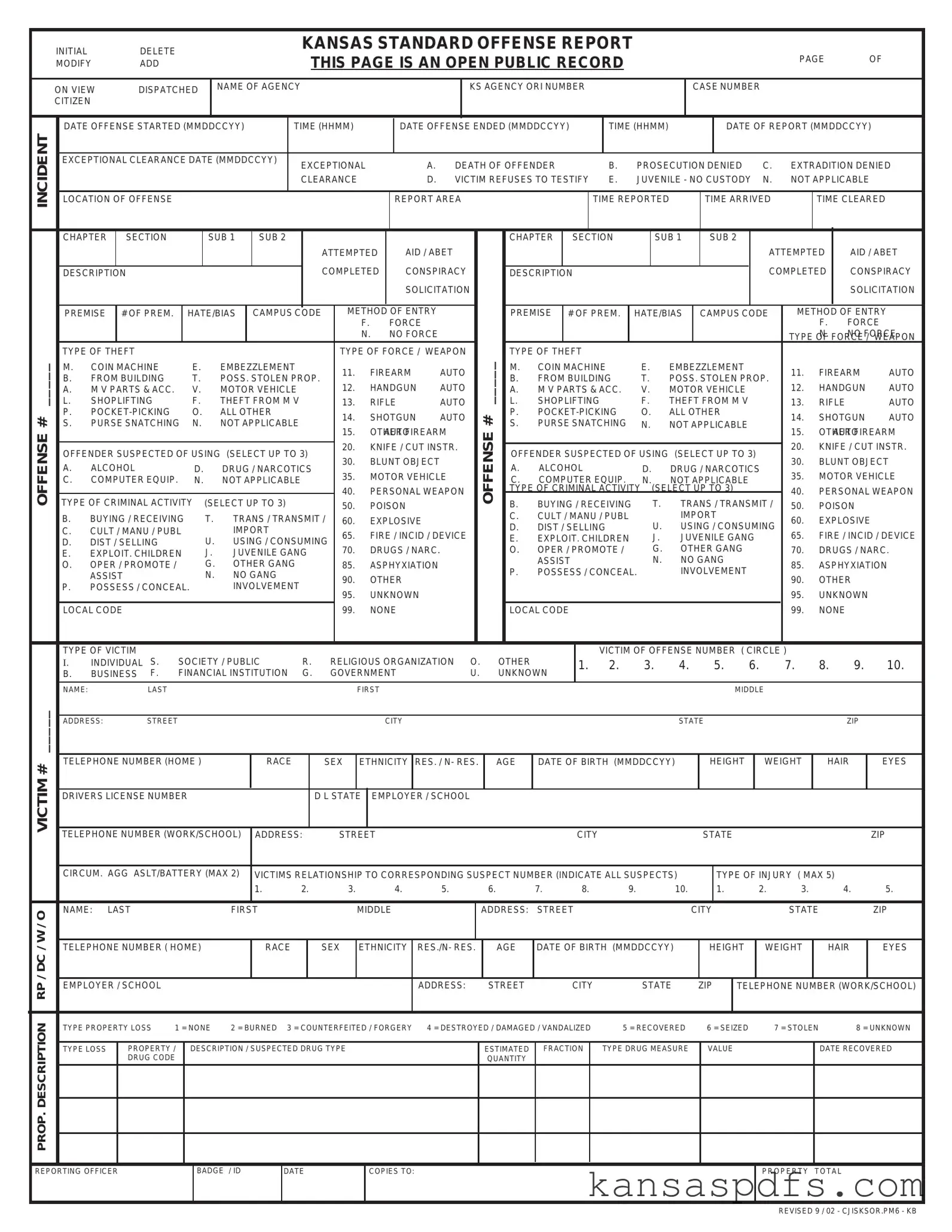What is the Kansas Standard Offense Report form?
The Kansas Standard Offense Report form is a document used by law enforcement agencies in Kansas to record details of criminal incidents. This form collects information on the incident, including type of offense, location, victim and offender details, type of property involved, and any evidence collected or observed at the scene. The data entered into this form becomes part of an open public record, making it accessible for various uses, including statistical analysis and public safety considerations.
Who can access the information on the Kansas Standard Offense Report form?
Since the page of the Kansas Standard Offense Report form states it is an open public record, the information can be accessed by the general public. This includes individuals, organizations, and entities interested in the data for various purposes such as research, legal proceedings, and public awareness. However, certain sensitive information might be protected or redacted to safeguard the privacy of individuals involved or to ensure the integrity of ongoing investigations.
What kinds of offenses are recorded on this form?
The Kansas Standard Offense Report form is designed to record a wide range of criminal offenses. This includes, but is not limited to, theft, assault, drug-related offenses, firearm usage, property damage, and crimes suggesting hate or bias motivation. The form allows for the classification of an incident by various categories and descriptions, including the nature of the crime (attempted, completed, conspiracy), the presence of bias, and the involvement of weapons or force.
How does the form address exceptional clearance of a case?
Exceptional clearance of a case occurs under certain conditions that prevent an arrest, despite authorities having identified the offender, having sufficient evidence to arrest, and knowing the offender's location. The Kansas Standard Offense Report form includes categories for exceptional clearance, such as death of the offender, prosecution denied, extradition denied, victim refuses to testify, and cases involving juveniles without custody. These classifications allow law enforcement to close cases with reasons why no arrest was made even when the case was effectively solved.
What details about victims and offenders are recorded on the form?
The form collects detailed information on both victims and offenders involved in an incident. For victims, this includes personal identifiers, demographic information, relationship to the offender, type of victim (e.g., individual, business, government entity), and any injuries sustained. For offenders, the form requests details such as name, demographic information, suspected substance use at the time of the offense, and involvement in criminal activity. This comprehensive data collection helps in analysis and investigation of crimes.
How are property and evidence details handled in the report?
Property and evidence form a crucial part of any criminal investigation, and the Kansas Standard Offense Report form has specific sections dedicated to these. Details about the type of property involved, the nature of the loss, and description of the items are captured. For evidence, the form provides options to indicate if evidence was obtained, what kind, where it was collected from, and its current location. This information assists in the prosecution of cases and return of property to rightful owners when possible.
Who is responsible for completing the Kansas Standard Offance Report form?
The responsibility of completing the Kansas Standard Offense Report form generally falls on the law enforcement officials who are investigating the incident. This includes police officers, detectives, or other authorized personnel. The reporting officer's information, such as badge or ID number, is also recorded on the form, ensuring accountability and traceability of the information provided.

